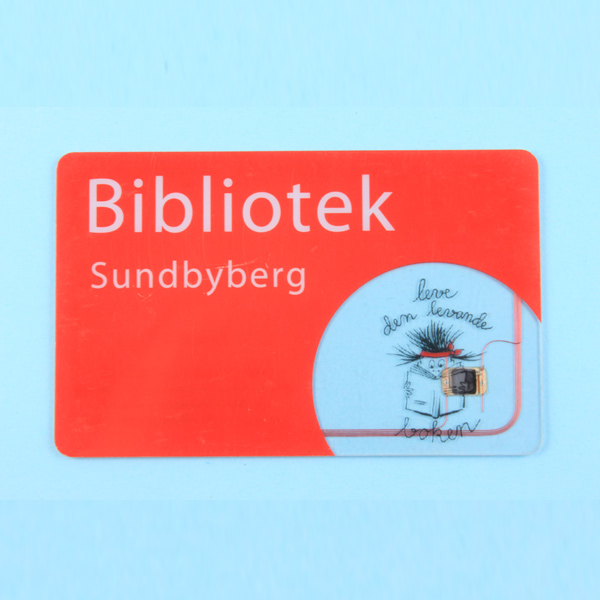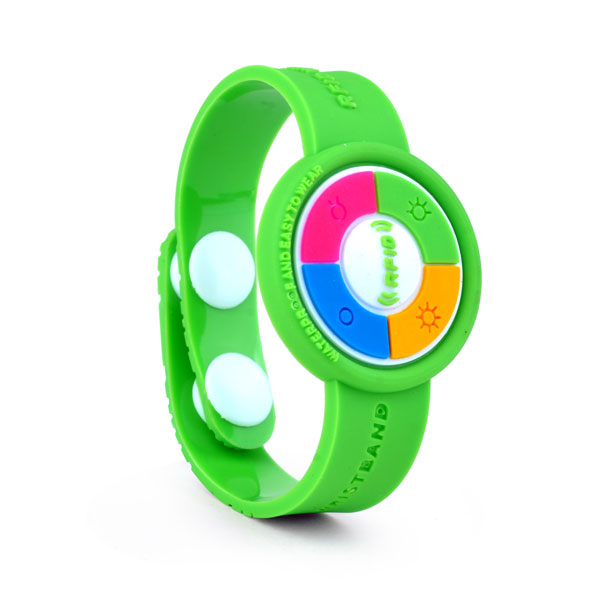History of RFID tags
In 1937, the U.S. Naval Research Laboratory (NRL) developed the identification Friend-or-Foe (IFF) system to distinguish allied aircraft from enemy aircraft. This technology later became the basis of modern air traffic control in the 1950s. And it is the germination of the early RFID technology, which has priority use in military, laboratory and so on.
In the late 1960s and early 1970s, radio frequency goods monitoring system is a common anti-theft system in shopping malls.
In the 1980s, early commercial applications included railways and food.
In the 1990s, standardization began, and the concept of EPC was put forward. Every item in the world was uniquely identified.
Form of RFID tags
The basic RFID tags system consists of three parts:
Tag: It is composed of coupling elements and chips. Each tag has a unique radio frequency coding. High capacity radio frequency tags have storage space that users can write into and attach to the object to identify the target object.
Reader: A device that reads (and sometimes writes) label information can be designed to be handheld type or fixed type.
Antenna: Transmits radio frequency signals between tags and readers.
Characteristic of RFID tags
Data storage: Compared with the traditional form of tags, the capacity is larger (1 bit - 1024 bit), and data can be updated at any time, and it can be read and written.
Speed of reading and writing: Compared with barcode, it does not need straight line alignment scanning. It has faster speed of reading and writing, and can recognize multiple targets and recognize in motion.
Easy to use: small size, easy package, and can be embedded in the product.
Security: special chip, unique serial number, difficult replicate.
Durable: no mechanical failure, long life, harsh environment defense function.
Sensing effect: much better than usual
Core technology of RFID tags
Radio Frequency Identification (RFID) is a non-contact automatic identification technology. It automatically identifies target objects and acquires relevant data through radio frequency signals. It can work without manual intervention and work in various harsh environments. RFID technology can identify high-speed moving objects and recognize multiple tags at the same time, which is fast and convenient to operate.
Radio frequency identification tags are a breakthrough technology: "First, it can identify a single very specific object, rather than only one kind of object like bar code; second, it uses radio frequency, which can read data through external materials, while bar code must rely on laser to read information; third, it can simultaneously identify and read multiple objects, while barcodes can only read one by one. In addition, the amount of information stored is also very large. "
China Standard of RFID tags
The issue of RFID tags standards in China has always been the focus of attention at home and abroad. It is also the core issue of whether to promote the rapid development of China's RFID industry as soon as possible. It was learned at the working meeting of RF label standard working group held in Beijing on June 26 of 2006. After joint efforts in 2007, the Chinese RFID tags group had put forward the three technical standards documents, that is, the basic electrical characteristics of 13.56MHz RFID, the specifications of 13.56MHz RFID reader and writer, and the physical characteristics of RFID tags.
Preparations for completion in 2008 include: 840-845 MHz, 920-925 MHz label standard draft, 13.56 MHz/radio frequency identification label basic electrical characteristics test method, 13.56 MHz radio frequency identification reader/writer test method, the physical characteristics test method standard draft of RFID tags.
Among various smart rfid tag manufacturers in China, Startrend can be your reliable rfid tag supplier. We supply high-quality products at competitive prices!
 How to Use RFID Technology to Realize the Asset Management of Urban Street Lamp
How to Use RFID Technology to Realize the Asset Management of Urban Street Lamp RFID Technology Helps the Beauty Retail Industry Set Off a New Tide
RFID Technology Helps the Beauty Retail Industry Set Off a New Tide The RFID Technology in the Field of Printing
The RFID Technology in the Field of Printing Five Advantages of Using Contactless IC Card for Membership Card
Five Advantages of Using Contactless IC Card for Membership Card The Application Of RFID Electronic Identity Certificate
The Application Of RFID Electronic Identity Certificate The RFID Technology Will Become a Catalyst for the Smart Traffic Management
The RFID Technology Will Become a Catalyst for the Smart Traffic Management



